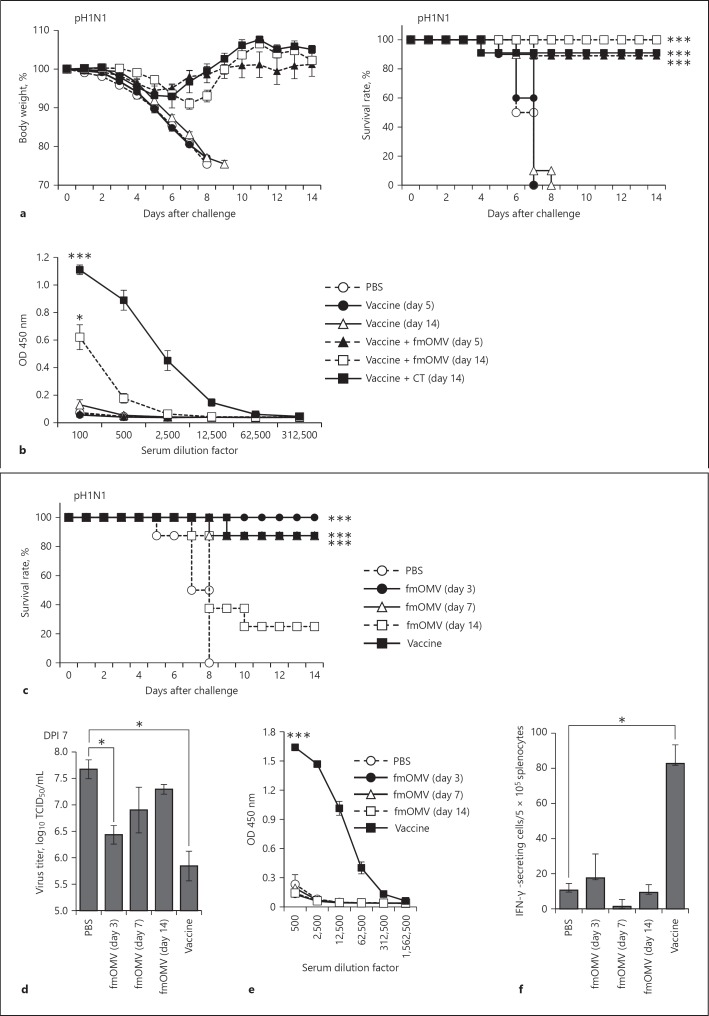Fig. 2.
Antiviral activity of fmOMV is independent of the adaptive immune response. Mice (n = 10) were intranasally immunized with the trivalent split influenza vaccine mixed with fmOMV or cholera toxin, and then challenged with pH1N1 virus at 5 and 14 days after the injection. a After challenge, the mice were monitored for changes in body weight and survival rate for 14 days. b Sera were collected before virus challenge, and the virus-specific antibody response was determined by ELISA. c–f Mice (n = 8) were injected with fmOMV alone. At 3, 7, or 14 days after the injection, the mice were infected with pH1N1 virus. The vaccinated group was immunized intramuscularly with pH1N1 split vaccine followed by a booster injection after 2 weeks (n = 8). Two weeks after the second injection, the mice were challenged with the pH1N1 virus. c The survival rates were monitored for 2 weeks after the pH1N1 viral challenge. d The lung tissues were collected at 7 days after the viral challenge and virus titers were determined. e Influenza-specific IgG antibodies were measured by ELISA using sera collected on the day of virus challenge. f IFN-γ-secreting T cells were estimated by enzyme-linked immunospot assay, using splenocytes harvested on the day of virus challenge. Data are presented as mean ± standard error of mean. *** p < 0.001, * p < 0.05.

